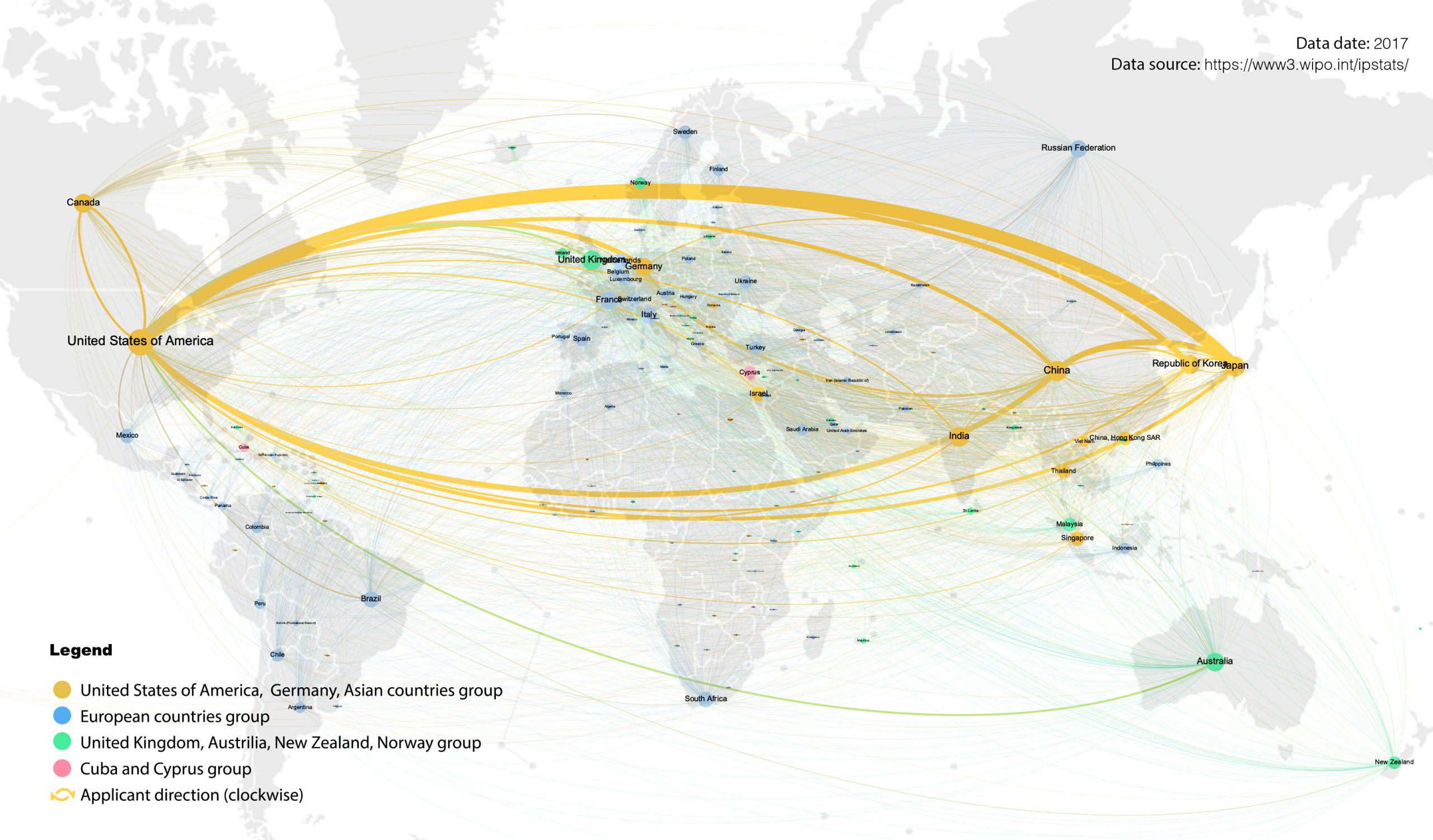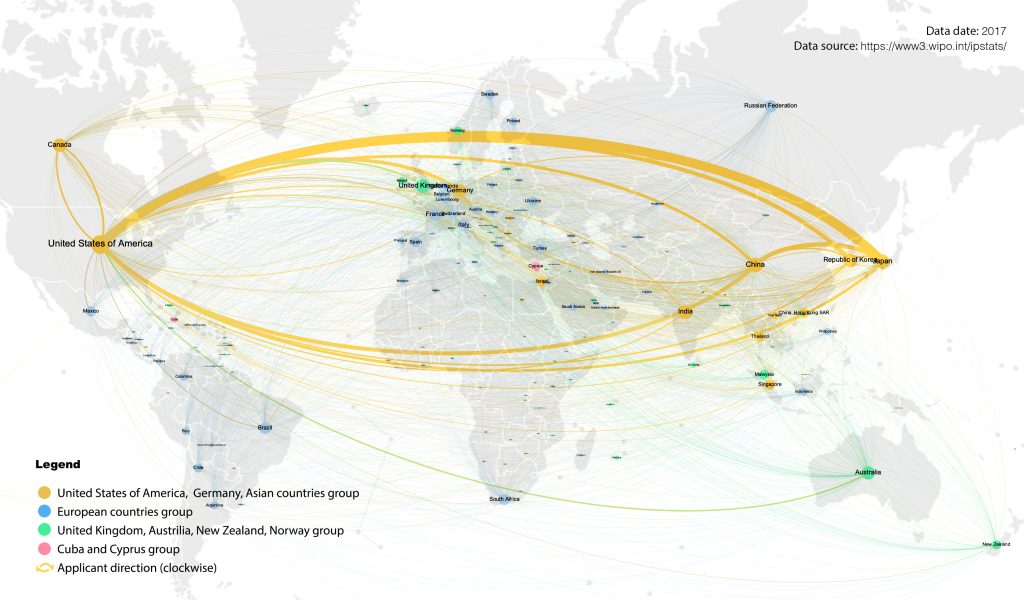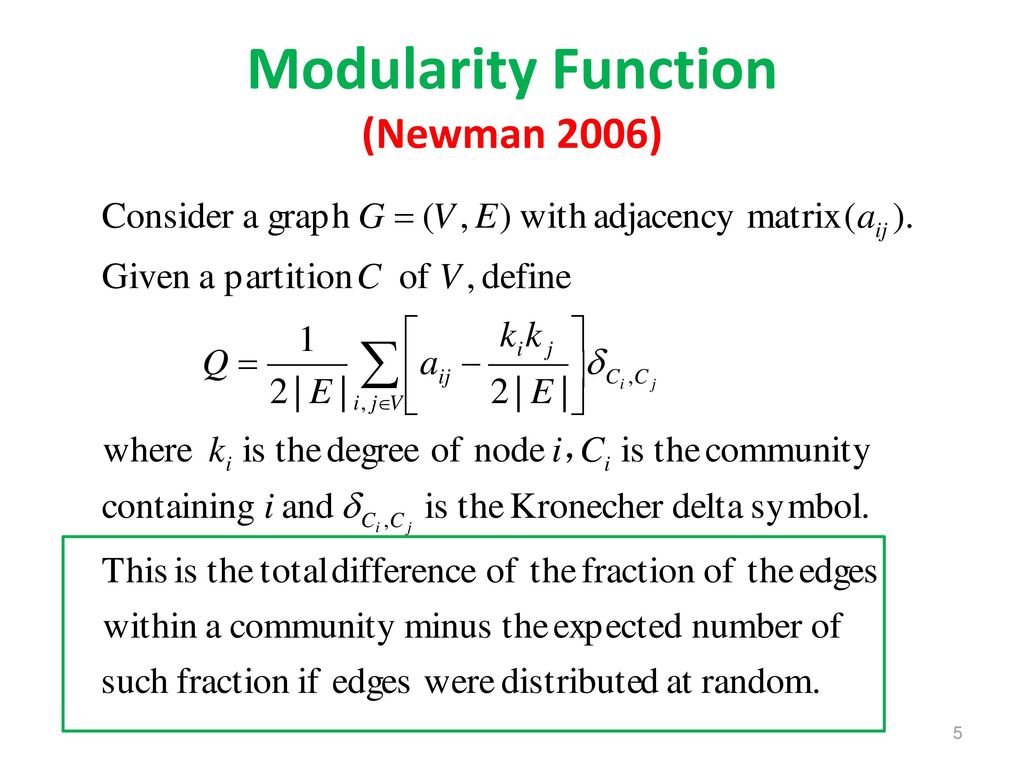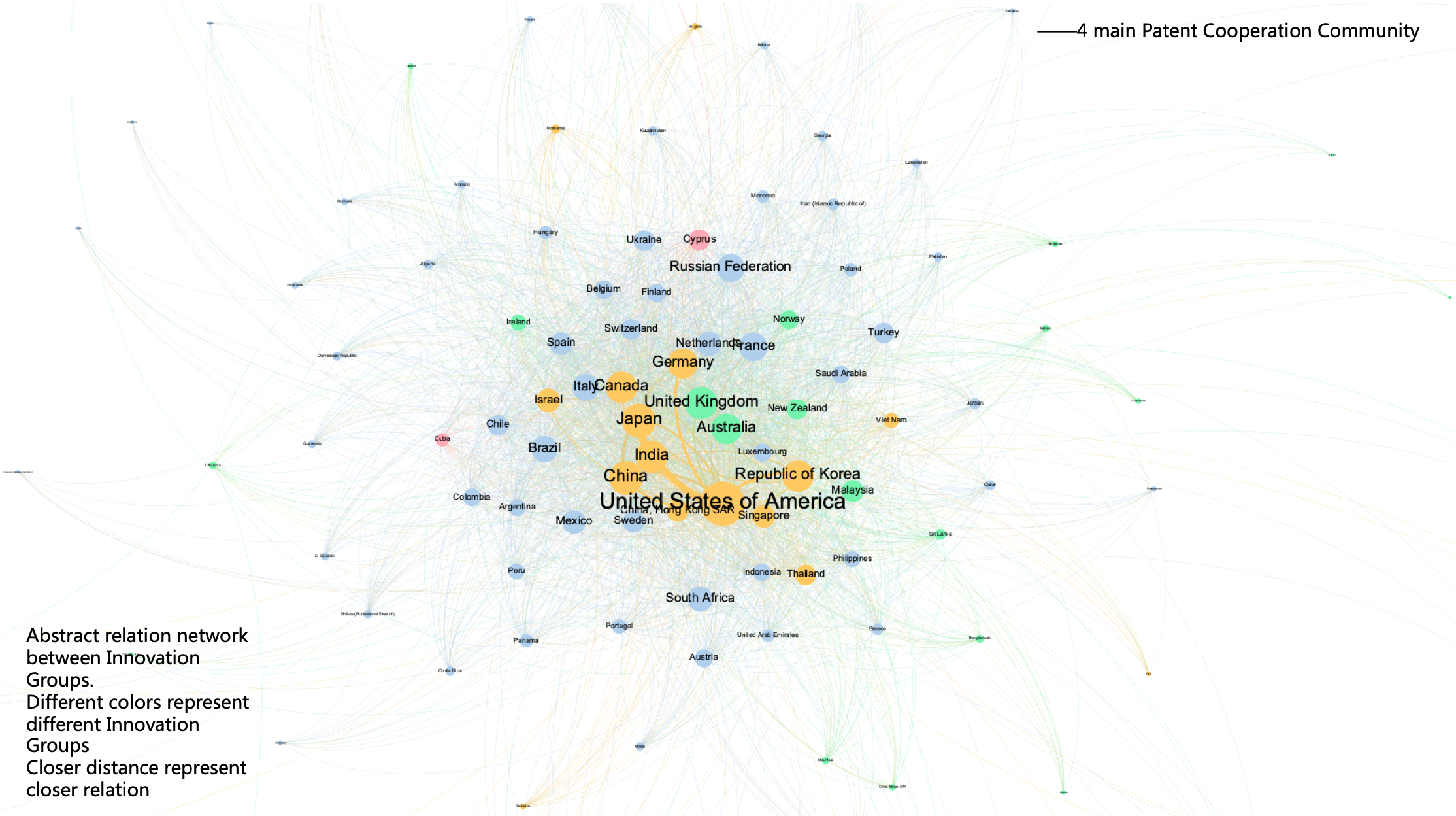

This research aims to explore the patent application cooperation relationships across the world. Based on the application data of resident and abroad count by applicant’s origin in 2017 from WIPO (World Intellectual Property Organization), we detect 4 the patent cooperation communities across the world with the optimal modularity algorithm. Modularity Q is the key measure, which is defined as the fraction of edges that fall within group 1 or 2, minus the expected number of edges within groups 1 and 2 for a random graph with the same node degree distribution as the given network. For a given division of the network’s vertices into some modules, modularity reflects the concentration of edges within modules compared with random distribution of links between all nodes regardless of modules.

# this slide is borrowed from the public lecture slide shared by Ding-Zhu Du at University of Texas
The 4 patent cooperation communities are shown in different colors in the figure above. The largest group is colored yellow in the figure and mainly consisted of United States of America, Germany and Asian countries such as China, Japanese, South Korea, India and etc.. The second largest community is the untied group of European and Latin American and African countries, which is represented with blue color in the figure. Another community is the Britain-centered community mainly with New Zealand, Australia, Norway. The last and most isolated community is consisted of the Cuba and Cyprus.

This research has established a feasible method to study the patent cooperation network, which has been applied to a similar quantitative research about the evolution of the patent cooperation network with historic data over the past 30 years. Coming soon……